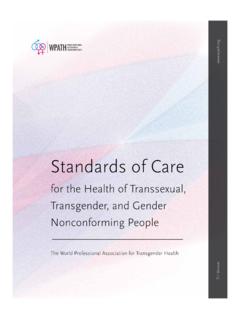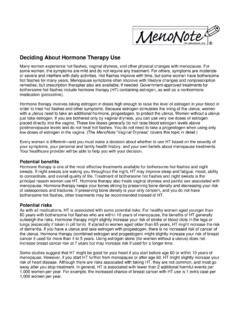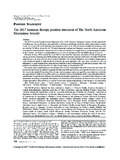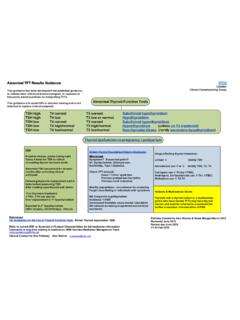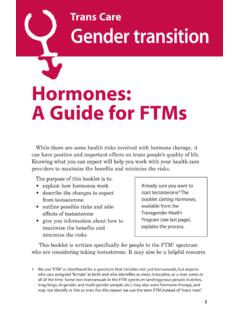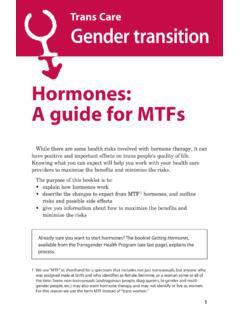Transcription of Standards of Care
1 7th Version of Carefor the Health of Transsexual, Transgender, and Gender Nonconforming PeopleThe World Professional Association for Transgender HealthStandards of 19/20/11 9:43 PMStandards of 29/20/11 9:43 PM7th Version1 | This is the seventh version of the Standards of Care. The original SOC were published in 1979. Previous revisions were in 1980, 1981, 1990, 1998, and of Carefor the Health of Transsexual, Transgender, and Gender Nonconforming PeopleThe World Professiona Association for Transgender HealthStandards of 39/20/11 9:43 PMStandards of 49/20/11 9:43 PMiThe Standards of Care 7th VersionWorld Professional Association for Transgender HealthTable of Contents I. Purpose and Use of the Standards of Care ..1 II. Global Applicability of the Standards of Care ..3 III.
2 The Difference between Gender Nonconformity and Gender Dysphoria ..4 IV. Epidemiologic Considerations ..6 V. Overview of Therapeutic Approaches for Gender Dysphoria ..8 VI. Assessment and Treatment of Children and Adolescents with Gender Dysphoria ..10 VII. Mental Health ..21 VIII. hormone therapy ..33 IX. Reproductive Health ..50 X. Voice and Communication therapy ..52 XI. Surgery ..54 XII. Postoperative Care and Follow-Up ..64 XIII. Lifelong Preventive and Primary Care ..65 XIV. Applicability of the Standards of Care to People Living in Institutional Environments ..67 XV. Applicability of the Standards of Care to People With Disorders of Sex Development ..69references ..72 Appendices: A. Glossary ..95 B. Overview of Medical Risks of hormone therapy ..97 C. Summary of Criteria for hormone therapy and Surgeries.
3 104 D. Evidence for Clinical Outcomes of Therapeutic Approaches ..107 E. Development Process for the Standards of Care, Version 7 ..109 Standards of 19/20/11 9:43 PMStandards of 29/20/11 9:43 PM1 The Standards of Care 7th VersionWorld Professional Association for Transgender HealthI Purpose and Use of the Standards of CareThe World Professional Association for Transgender Health (WPATH)1 is an international, multidisciplinary, professional association whose mission is to promote evidence-based care, education, research, advocacy, public policy, and respect for transgender health. The vision of WPATH is to bring together diverse professionals dedicated to developing best practices and supportive policies worldwide that promote health, research, education, respect, dignity, and equality for transsexual, transgender, and gender nonconforming people in all cultural of the main functions of WPATH is to promote the highest Standards of health care for individuals through the articulation of Standards of Care (SOC) for the Health of Transsexual, Transgender, and Gender Nonconforming People.
4 The SOC are based on the best available science and expert professional Most of the research and experience in this field comes from a North American and Western European perspective; thus, adaptations of the SOC to other parts of the world are necessary. Suggestions for ways of thinking about cultural relativity and cultural competence are included in this version of the overall goal of the SOC is to provide clinical guidance for health professionals to assist transsexual, transgender, and gender nonconforming people with safe and effective pathways to achieving lasting personal comfort with their gendered selves, in order to maximize their overall health, psychological well-being, and self-fulfillment. This assistance may include primary care, gynecologic and urologic care, reproductive options, voice and communication therapy , mental health services ( , assessment, counseling, psychotherapy), and hormonal and surgical treatments.
5 While this is primarily a document for health professionals, the SOC may also be used by individuals, their families, and social institutions to understand how they can assist with promoting optimal health for members of this diverse population. WPATH recognizes that health is dependent upon not only good clinical care but also social and political climates that provide and ensure social tolerance, equality, and the full rights of citizenship. Health is promoted through public policies and legal reforms that promote tolerance and equity 1 Formerly the Harry Benjamin International Gender Dysphoria Association2 Standards of Care (SOC), Version 7 represents a significant departure from previous versions. Changes in this version are based upon significant cultural shifts, advances in clinical knowledge, and appreciation of the many health care issues that can arise for transsexual, transgender, and gender nonconforming people beyond hormone therapy and surgery (Coleman, 2009a, b, c, d).
6 Standards of 19/20/11 9:43 PM2 The Standards of Care 7th VersionWorld Professional Association for Transgender Healthfor gender and sexual diversity and that eliminate prejudice, discrimination, and stigma. WPATH is committed to advocacy for these changes in public policies and legal reforms. The Standards of Care Are Flexible Clinical Guidelines The SOC are intended to be flexible in order to meet the diverse health care needs of transsexual, transgender, and gender nonconforming people. While flexible, they offer Standards for promoting optimal health care and guiding the treatment of people experiencing gender dysphoria broadly defined as discomfort or distress that is caused by a discrepancy between a person s gender identity and that person s sex assigned at birth (and the associated gender role and/or primary and secondary sex characteristics) (Fisk, 1974; Knudson, De Cuypere, & Bockting, 2010b).
7 As for all previous versions of the SOC, the criteria put forth in this document for hormone therapy and surgical treatments for gender dysphoria are clinical guidelines; individual health professionals and programs may modify them. Clinical departures from the SOC may come about because of a patient s unique anatomic, social, or psychological situation; an experienced health professional s evolving method of handling a common situation; a research protocol; lack of resources in various parts of the world; or the need for specific harm reduction strategies. These departures should be recognized as such, explained to the patient, and documented through informed consent for quality patient care and legal protection. This documentation is also valuable for the accumulation of new data, which can be retrospectively examined to allow for health care and the SOC to evolve.
8 The SOC articulate Standards of care but also acknowledge the role of making informed choices and the value of harm reduction approaches. In addition, this version of the SOC recognizes and validates various expressions of gender that may not necessitate psychological, hormonal, or surgical treatments. Some patients who present for care will have made significant self-directed progress towards gender role changes, transition, or other resolutions regarding their gender identity or gender dysphoria. Other patients will require more intensive services. Health professionals can use the SOC to help patients consider the full range of health services open to them, in accordance with their clinical needs and goals for gender expression. Standards of 29/20/11 9:43 PM3 The Standards of Care 7th VersionWorld Professional Association for Transgender HealthII Global Applicability of the Standards of CareWhile the SOC are intended for worldwide use, WPATH acknowledges that much of the recorded clinical experience and knowledge in this area of health care is derived from North American and Western European sources.
9 From place to place, both across and within nations, there are differences in all of the following: social attitudes towards transsexual, transgender, and gender nonconforming people; constructions of gender roles and identities; language used to describe different gender identities; epidemiology of gender dysphoria; access to and cost of treatment; therapies offered; number and type of professionals who provide care; and legal and policy issues related to this area of health care (Winter, 2009). It is impossible for the SOC to reflect all of these differences. In applying these Standards to other cultural contexts, health professionals must be sensitive to these differences and adapt the SOC according to local realities. For example, in a number of cultures, gender nonconforming people are found in such numbers and living in such ways as to make them highly socially visible (Peletz, 2006).
10 In settings such as these, it is common for people to initiate a change in their gender expression and physical characteristics while in their teens, or even earlier. Many grow up and live in a social, cultural, and even linguistic context quite unlike that of Western cultures. Yet almost all experience prejudice (Peletz, 2006; Winter, 2009). In many cultures, social stigma towards gender nonconformity is widespread and gender roles are highly prescriptive (Winter et al., 2009). Gender nonconforming people in these settings are forced to be hidden, and therefore may lack opportunities for adequate health care (Winter, 2009).The SOC are not intended to limit efforts to provide the best available care to all individuals. Health professionals throughout the world even in areas with limited resources and training opportunities can apply the many core principles that undergird the SOC.
